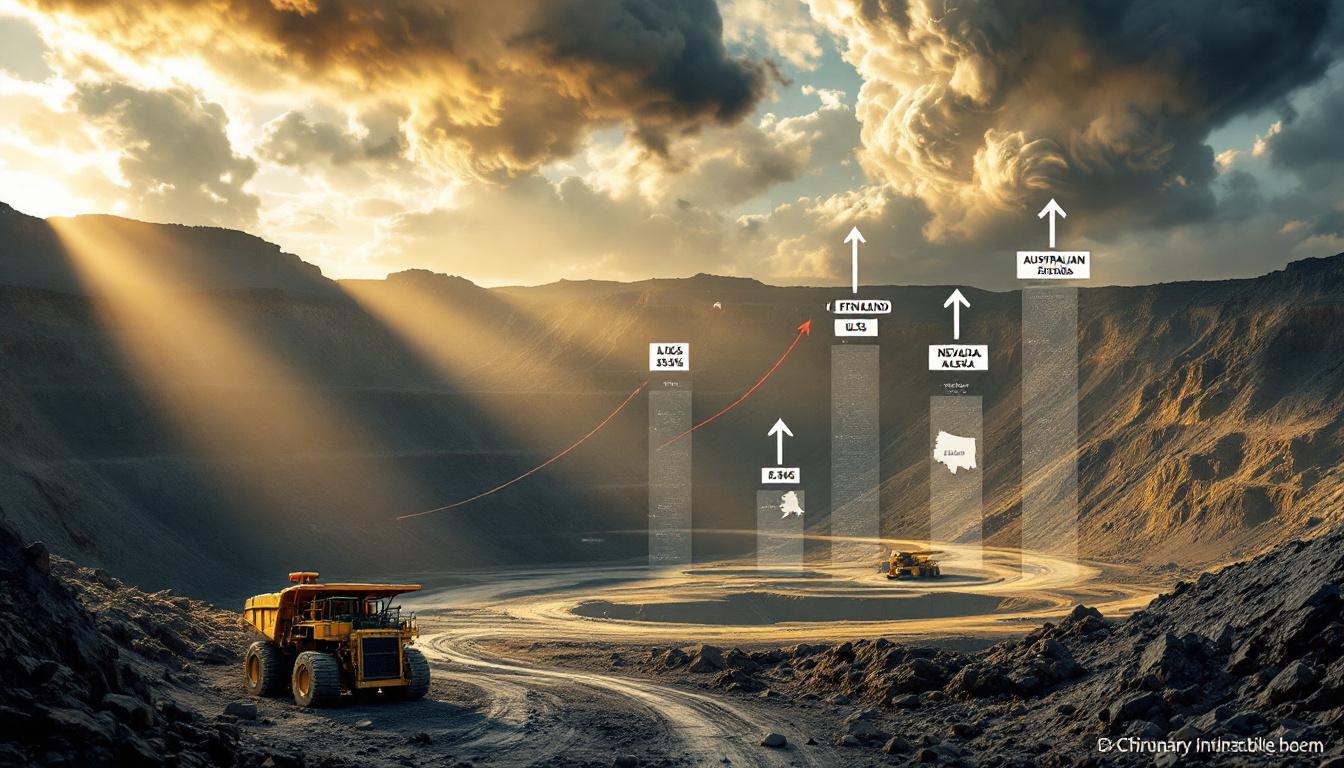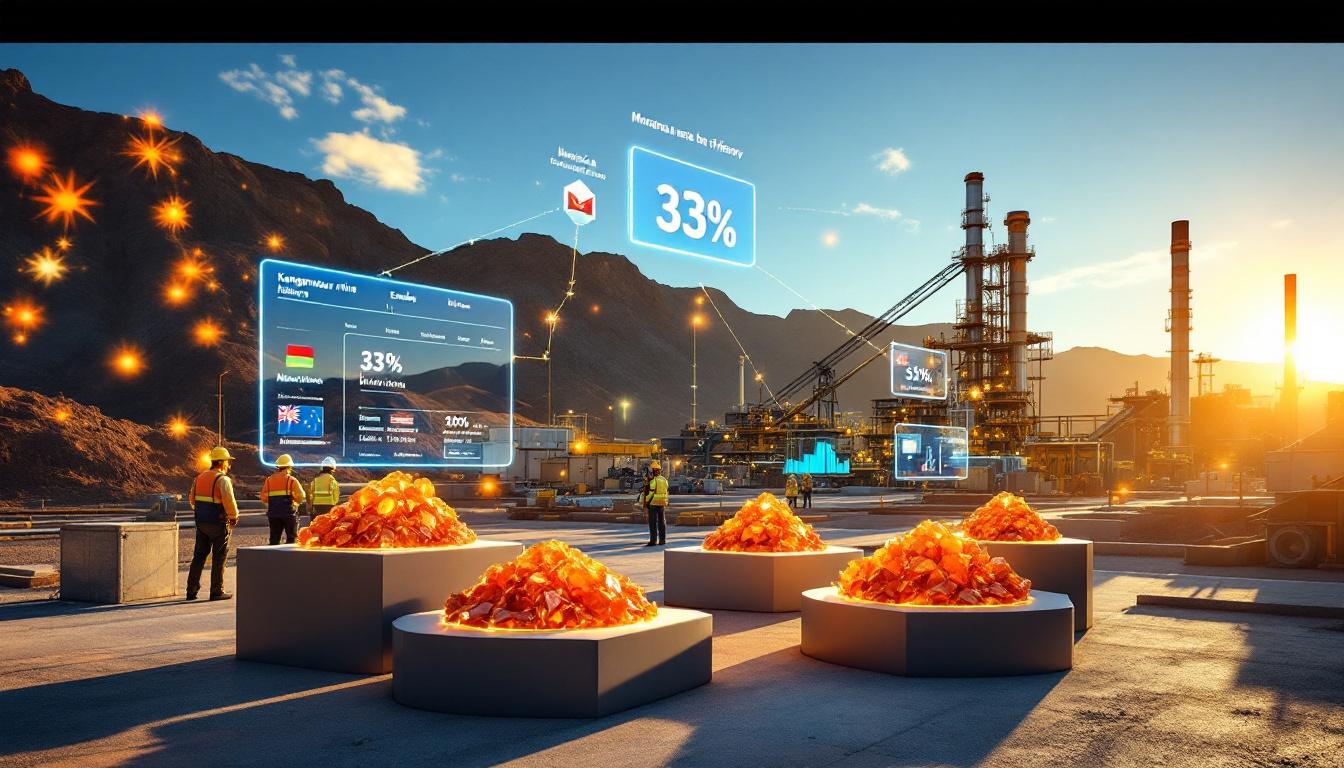Understanding the US-China Rare Earth Conflict
The global rare earth elements (REEs) market represents a $9.3 billion industry dominated by China's 85% control over processing capacity, despite the United States importing only $170 million annually. This paradox stems from China's strategic consolidation of separation technologies and solvent extraction capabilities since the 1990s, coupled with lax environmental regulations that reduced production costs by 30-40% compared to Western counterparts. While military applications consume just 9% of REE output, their irreplaceability in guidance systems like the F-35 fighter jet's AN/APG-81 AESA radar creates asymmetric vulnerabilities. The 2010 Dongfeng missile crisis, where China restricted exports to Japan during Senkaku Islands tensions, demonstrated REEs' weaponization potential, causing neodymium prices to spike 750% within three months. Current diversification efforts through Mountain Pass Mine's 15,000-ton annual output and Lynas Corporation's Malaysian processing plant remain constrained by China's export restrictions and 90% market share in permanent magnets.
What Are Rare Earth Metals and Why Do They Matter?
Defining Rare Earth Elements
- 17 metallic elements on the periodic table with unique properties including the 15 lanthanides plus scandium and yttrium
- Despite the name, rare earths aren't actually scarce in the Earth's crust – cerium is as abundant as copper
- Distinguished by their applications in high-tech industries and green technologies due to unique magnetic, luminescent, and electrochemical properties
Strategic Applications of Rare Earth Metals
- Used in manufacturing high-performance NdFeB magnets for electric vehicles, with each Tesla requiring up to 3kg of neodymium
- Critical components in defense equipment including precision-guided munitions and radar systems
- Essential for renewable energy technologies including wind turbines, where each megawatt of capacity requires approximately 600kg of rare earth materials
- Common in everyday consumer electronics and, surprisingly, vacuum cleaners which represent the largest single consumer application
The Reality of China's Rare Earth Dominance
China's Market Share and Production Capacity
- China controls approximately 85% of global rare earth processing through a strategic focus developed since the 1990s
- Only $170 million worth of rare earths imported annually by the US, a surprisingly small figure given their strategic importance
- Relatively small global trade volume compared to other strategic commodities like semiconductors ($600 billion) or oil ($1.5 trillion)
- Processing capacity, not raw material scarcity, creates the supply bottleneck, with China's Baotou region housing the world's largest processing facilities
The Economics of Rare Earth Production
- Mining and processing creates significant environmental challenges, generating 2,000 tons of toxic waste for each ton of rare earths produced
- China's dominance stems from lower environmental standards and state support through the "863 Program" that invested $1.7 billion in rare earth research
- Processing facilities outside China face higher regulatory and cost barriers, increasing production costs by 30-40%
- Economic viability remains challenging for non-Chinese producers with Mountain Pass mine in California having filed for bankruptcy twice before recent revival
How Are Rare Earths Used in Modern Technology?
Consumer Applications
- Most common usage is in vacuum cleaners, contrary to popular perception, where powerful small motors require high-performance magnets
- Components in smartphones, computers, and other consumer electronics including speakers, vibration motors and display technologies
- Used in manufacturing catalytic converters and glass polishing, with cerium oxide being the primary polishing agent for precision optics
- LED lighting technologies utilize europium and yttrium for color phosphors, enabling energy-efficient lighting
Critical Industrial and Defense Applications
- Essential for precision-guided munitions and defense systems, with each F-35 fighter jet containing nearly 427kg of rare earth materials
- Used in jet engines, missile guidance systems, and radar technologies where temperature resistance and magnetic stability are crucial
- Critical for satellite communications and space exploration equipment due to radiation resistance properties
- Key components in medical imaging technologies like MRI machines, which require up to 3,000kg of rare earth magnets per unit
How Has China Weaponized Rare Earth Exports?
Historical Trade Restrictions
- Previous instances of China limiting exports during geopolitical tensions, establishing a pattern of strategic leverage
- 2010 rare earth embargo against Japan during Senkaku/Diaoyu Islands territorial disputes caused prices to spike 750% within three months
- Recent reports of shipment delays coinciding with US-China rare earth trade tensions, though officially denied by Chinese authorities
- Strategic leverage used as diplomatic and economic pressure through subtle export license delays rather than overt embargoes
Impact on Global Supply Chains
- Manufacturing disruptions when supply constraints occur, forcing companies to idle production lines or seek inferior alternatives
- Price volatility during periods of trade uncertainty, with dysprosium prices fluctuating by over 400% during various crises
- Forces companies to maintain larger inventories as risk mitigation, increasing carrying costs by an estimated 15-20%
- Accelerates efforts to develop alternative supply chains, with companies investing $11.2 billion in non-Chinese sources since 2018
What Are US and Allied Responses to China's Rare Earth Dominance?
Domestic Production Initiatives
- Reopening of Mountain Pass mine in California under MP Materials, now producing 15,000 tons annually but still sending material to China for processing
- Federal funding for rare earth processing facilities through the Department of Energy's $120 million Critical Materials Institute
- Strategic minerals stockpiling programs through the Defense Logistics Agency, though current reserves cover less than six months of military needs
- Research into recycling and recovery technologies, with the USGS estimating that less than 1% of rare earths are currently recycled
International Partnerships and Diversification
- Collaboration with Australia, Canada, and other allies through the Minerals Security Partnership comprising 14 nations
- Investment in rare earth projects in friendly nations, including Australia's Lynas Corporation receiving $120 million in Pentagon funding
- Development of substitute materials and technologies, including DARPA's $70 million investment in rare earth alternatives
- Trade agreements focused on critical mineral security, with provisions appearing in USMCA and proposed agreements with Japan and Australia
How Serious Is the Rare Earth Threat to US National Security?
Assessing the Strategic Vulnerability
- Actual dependency is less severe than often portrayed in media, with alternatives existing for many applications
- $170 million annual import value indicates relatively small direct economic impact compared to other strategic sectors
- Long-term concerns more significant than short-term disruptions, particularly for specialized military applications
- Substitutes exist for many, but not all, rare earth applications – with dysprosium and terbium being particularly difficult to replace
Comparing to Other Strategic Resources
- Oil, semiconductors, and pharmaceuticals represent larger strategic vulnerabilities with annual import values in the hundreds of billions
- Rare earths represent a targeted but limited pressure point within the broader US-China economic relationship
- Actual impact potential varies significantly by specific element and application, with heavy rare earths posing greater risks
- Threat amplified by media coverage and political narratives, often exceeding technical realities according to materials science experts
What Is the Future of Rare Earth Supply Chains?
Emerging Production Sources
- New mines and processing facilities under development globally, including projects in Australia, Canada, and Greenland
- Growing investment in rare earth recycling technologies, with Apple's 2025 robot-based disassembly lines recovering 95% of iPhone REEs
- Potential for deep-sea mining of rare earth deposits, with the International Seabed Authority developing regulations for nodule collection
- Urban mining from electronic waste becoming more economically viable, with 1 ton of smartphones containing more gold than 1 ton of ore
Technological Adaptations
- Research into substitute materials to reduce dependency, including Tesla's 2025 induction motor redesign using yttrium-aluminum-garnet dopants
- Design changes to minimize rare earth requirements, reducing neodymium usage per vehicle by 85% in some applications
- Improved recycling methods to recover materials from end-of-life products, though global e-waste processing reaches just 17.4% efficiency
- Circular economy approaches to rare earth management, with blockchain-enabled material passports tracking REE flows from mine to product
How Does the Rare Earth Dispute Impact US Energy Policy?
Implications for Renewable Energy Transition
- Rare earths essential for wind turbines and electric vehicle motors, with clean energy demand projected to increase REE needs by 300% by 2030
- Supply constraints could slow green technology deployment, potentially adding $1.5 billion in costs to the US renewable sector
- Creates tension between environmental goals and supply security, as domestic mining faces regulatory hurdles
- Accelerates research into rare earth-free renewable technologies, including superconducting wind turbines and switched reluctance motors
Effects on Domestic Energy Production
- Previous administration's focus on expanding total energy output led to streamlined permitting for critical minerals race projects
- Potential for policy shifts prioritizing energy independence over environmental concerns, as seen in recent EPA regulatory reviews
- Implications for fossil fuel development versus renewable investments, with resource security becoming a bipartisan policy concern
- Strategic considerations affecting permitting and regulatory approaches for new mining and processing facilities
FAQ: Common Questions About Rare Earth Elements
Are rare earth elements actually rare?
- No, most are relatively abundant in the Earth's crust – cerium is as common as copper and more abundant than lead
- The term "rare" refers to their dispersed distribution rather than scarcity, rarely forming concentrated ore deposits
- Economic extraction and processing challenges create supply limitations, not geological scarcity
Which rare earth elements are most critical?
- Neodymium and praseodymium for permanent magnets, used in electric vehicles and wind turbines
- Dysprosium and terbium for high-temperature applications, essential for defense systems
- Europium and yttrium for phosphors and display technologies in consumer electronics
Can the US achieve rare earth independence?
- Complete independence unlikely in the near term due to processing infrastructure gaps
- Domestic production capacity is growing but faces economic challenges against subsidized Chinese operations
- Recycling and substitution offer partial solutions, potentially reducing import needs by 25-35% within a decade
- International partnerships provide more realistic path to supply security through diversified sourcing
Conclusion: The Path Forward in US-China Rare Earth Relations
The path to rare earth security lies not in autarky but in diversified innovation ecosystems combining advanced recycling, material science breakthroughs, and strategic international partnerships. As dual-use technologies blur civilian and military supply chains, policies must balance environmental stewardship with technological sovereignty imperatives. Implementing blockchain-enabled material passports, accelerating EPA approval for sustainable extraction techniques, establishing strategic reserves, and expanding funding for innovative separation technologies will create resilience without sacrificing economic or environmental objectives. Additionally, countries are investing in Iluka rare earth refinery projects and exploring opportunities in Africa's critical minerals sector, while also adopting digital mining innovations to improve extraction efficiency.
Ready to Capitalise on the Next Major Mineral Discovery?
Don't miss potential opportunities in the critical minerals and rare earths sector – Discovery Alert's proprietary Discovery IQ model delivers real-time notifications on significant ASX mineral discoveries, providing actionable insights ahead of market movements. Explore historic examples of exceptional discovery returns by visiting the Discovery Alert discoveries page and start your 30-day free trial today.




